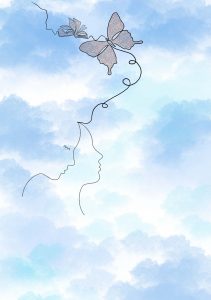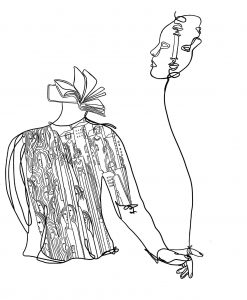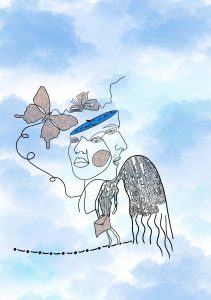Last week, we organized the first co-creation session from the Refugee Academy with citizen initiatives and social enterprises from different parts of the Netherlands to explore the meanings of their roles for the inclusion of refugees. This text provides more explanation about the background of this session and what emerged during this initial gathering. Additionally, we look ahead to the second co-creation session on Thursday, October 22nd.
In recent years, many wonderful initiatives have emerged that contribute in various ways to the reception, guidance, and inclusion of newcomers in the Netherlands. From the Refugee Academy, we aim to highlight the strength and potential of these initiatives. This is pursued through projects like Learning Crossroads for Refugee Inclusion. Last year, we held two intensive gatherings with initiatives in Amsterdam connected through the network ‘De Breakfast Club’ to collaboratively craft a narrative about the significance of these initiatives.
Over the past few months, we’ve had to temporarily scale back conducting interviews. This time was used to work on a narrative that aggregates all the stories and knowledge gathered from previous interviews and masterclasses. Here, we weave together the approaches of different initiatives dedicated to newcomers (ranging from alternative housing, guidance, art creation, engagement, pathways to employment, entrepreneurship, and more). Our aim is to create a bigger picture. Simultaneously, from our perspective as researchers, we’ve outlined a vision regarding the potential power of initiatives. Why does our society need this field? What can we learn from it?
To lend more context to this narrative, we’re organizing two co-creation sessions with initiatives from across the Netherlands. The goal is to collectively review this story and refine it further so that all initiatives can recognize themselves within it based on their own experiences.
Last week, the first session took place. Unfortunately, due to the measures related to the coronavirus, we couldn’t physically meet. However, through a video call connection using Zoom, we were able to turn this necessity into an advantage: the online gathering allowed us to involve initiatives from outside Amsterdam in the discussion during the meeting.
Central to the meeting was the report “The Power of an Alternative Story for Refugee Inclusion: Contributions of Citizen Initiatives for Refugees in Dutch Society”, a so-called ‘growth document’ that is continuously developed through co-creation.
In this report, the significance of different initiatives for various stages in the initial period of refugees’ lives is brought together like puzzle pieces to form a collective picture. During the co-creation session, many participants found themselves identifying with the story in the report. The report also serves as a practical tool for continuous reflection on the opportunities and challenges of these initiatives; it acts as a reminder for initiatives to hold up a mirror to themselves and check whether the ‘dance’ created for refugee inclusion is still shaped by equal ‘dance partners’.
During the first session, it quickly became clear where this narrative could be further refined. Firstly, the collective story of the initiatives is not merely an addition to the contributions made by more formal and institutionalized organizations such as municipalities and the Central Agency for the Reception of Asylum Seekers (COA). Both stories are complementary to each other; they are both necessary – and they need each other – for successful refugee inclusion in Dutch society.
A second point for further refinement concerns the fact that some participants do not recognize themselves or feel little connection with the term ‘citizen initiative’. For them, the term ‘social enterprise’ often better aligns with what they actually do, even if they may have started as citizen initiatives or base their work on principles often seen in citizen initiatives. The challenge for the ‘growth document’ is to find ways to give words that do justice to the diversity in practices and experiences of the various initiatives.
During the first co-creation session, the question of how to actually create impact from the collective story formed by citizen initiatives and social enterprises was frequently raised. How can successful alliances be formed between the initiatives and more established organizations, and how can the documented story be used in this process? For the second co-creation session, we will therefore use this question as a starting point.



Illustrator: Parisa Akbarzadehpoladi
